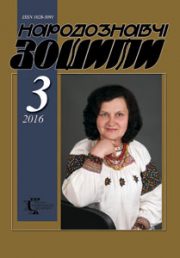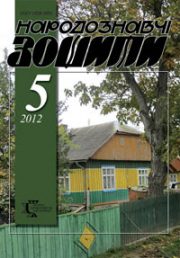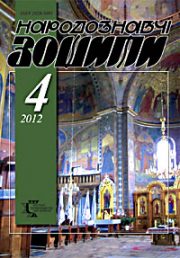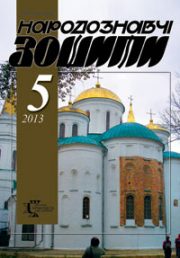The Ethnology Notebooks. 2024. № 5 (179), 1242—1248
UDK [737.3.012.021.2.011.2:656.835:39](477)”20″
DOI https://doi.org/10.15407/nz2024.05.1242
ETHNO-CULTURE IN THE DESIGN OF THE MODERN POSTAGE STAMP
RADOMSKA Violetta
- ОRCID ID: https://orcid.org/0000-0001-6868-868X
- Candidate of Art History, Senior Lecturer
- of the Department of Design and Fundamentals
- of Architecture of the Lviv Polytechnic National University,
- 12, st. S. Bandery, 79013, Lviv, Ukraine,
- Contacts: e-mail: w.r.radomska@gmail.com
BOYKO Khrystyna
- ОRCID ID: https://orcid.org/0000-0002-4889-8337
- Ph.D. in Architecture, Associate Professor
- of the Department of Design and Fundamentals
- of Architecture of the Lviv Polytechnic National University,
- 12, st. S. Bandery, 79013, Lviv, Ukraine,
- Contacts: e-mail: khrystyna.boyko@hotmail.com
Abstract. In the context of the generative applied function of graphic design, the postage stamp acquires a new meaning, relevant for today’s society in the globalized arena, namely, it is not only a sign of postage, but an individual representation of statehood and culture.
The goal is to determine the synchronicity of social constructs (views, collective ideas of Ukrainians) with the design of the Ukrainian brand.
The historiographical analysis of the development of the identity of Ukrainian stamp publishing proves the need to create an actual stamp filled with content, with the most aesthetic author’s graphic visualization and artistic and technical compositional approaches, as well as with an emotional component, which, in addition to the certificate of payment for postage, would convey the artistic value of a work of applied graphics of small forms with conscious cultural and state identification.
The research methodology is based on the complex involvement of various methods, principles and concepts.
Keywords: postage stamp, identity, ethnoculture, project, design, stamp issue.
Received 17.09.2024
REFERENСES
- Bokareva, Y.S. (2007). The symbolic load of the postal thumbnail as an object of graphic design. Bulletin of the Kharkiv State Academy of Design and Arts, 4 (48), 10—16 [in Ukrainian].
- Bokareva, Y.S. (2007). Visual manifestation of utilitarian aspects of postal stamps of Ukraine. Bulletin of the Kharkiv State Academy of Design and Arts, 1 (49), 20—24 [in Ukrainian].
- Potylchak, O.V. (2021). An overview of the artistic qualities of postage stamps. Ukrainian Herald, 11, 3—6 [in Ukrainian].
- Orekhova, S.E. (2020). State symbols on postage stamps: world standards. Bulletin of the Mariupol State University. Series: History. Political science (Issue 28—29, pp. 109—123) [in Ukrainian].
- Radomska, V., & Golovata, O. (2020). Graphic design in Ukrainian postage stamps. InterConf, 5 (35), 42—46. Retrieved from: https://ojs.ukrlogos.in.ua/index.php/interconf/article.
- Stamps of Ukraine. Retrieved from: https://ukrposhta.ua/marki-ukraїni-seriya-ukraїnskij-narodnij-odyag-2/.
- The first minerals on stamps of Ukraine. Retrieved from: https://ukrmineral.org/sites/default/files/u5/kvasnytsya_chernysh4 2010.pdf.
- Ukrainian courtyard. Retrieved from: https://post-stamps.info/marki-ukrainy/ukraїnske-podvirya.html.
- Postal block. Retrieved from: https://ukrposhta.ua/poshtovij-blok-89-nacionalnij-prirodnij-park-svyati-gori-z-4-x-marok-1087-1090/.
- Symbols of Ukrainian embroidery. Retrieved from: https://www.rusnauka.com/34_VPEK_2012/Philologia/9_121681.doc.htm.
- «Ukrposhta» will issue new stamps with embroidery elements of Kharkiv Region and Crimea. Retrieved from: https://life.pravda.com.ua/society/ukrposhta-vipustit-novi-marki-do-dnya-vishivanki-foto-301503/.







